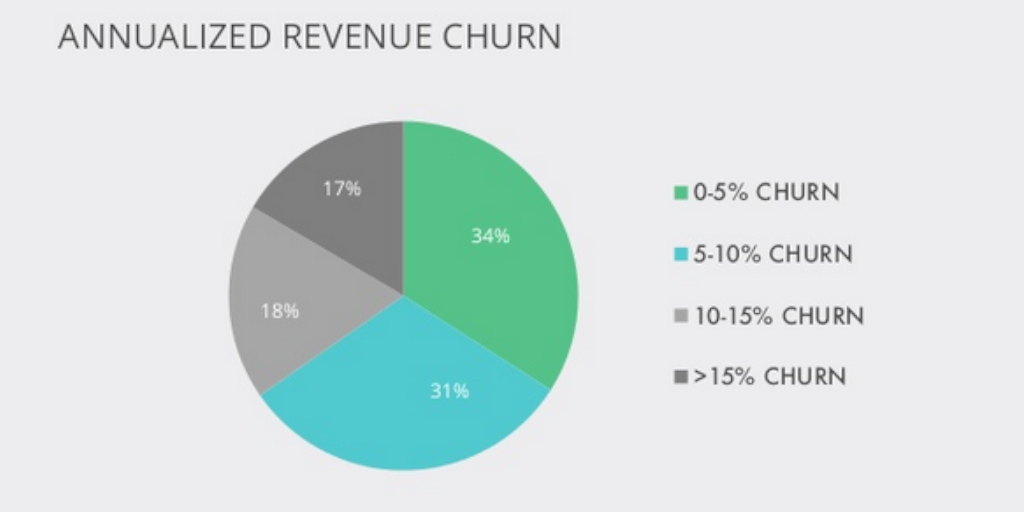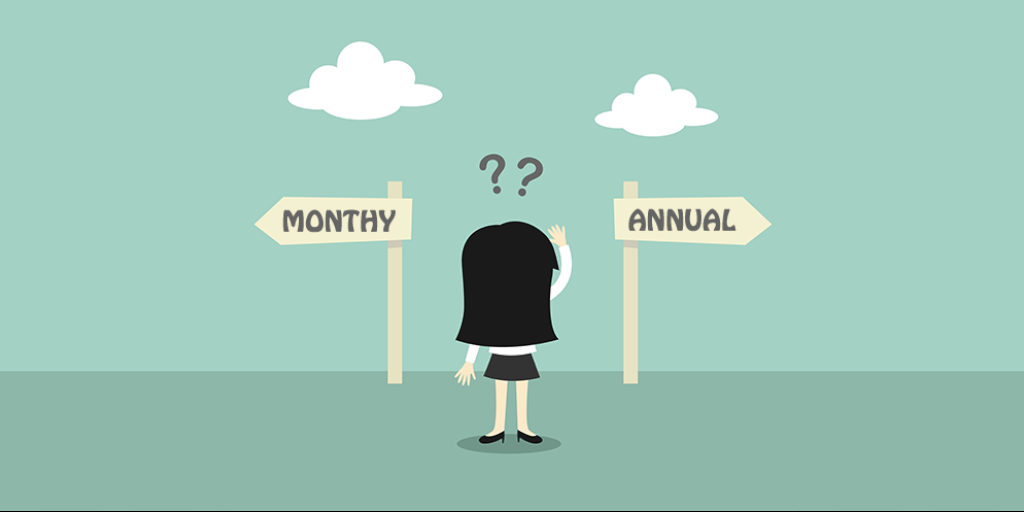
For organizations, updating prices is like getting plastic surgery (I imagine).
You’re painfully aware that people can see what you’ve done, but under no circumstances will you ever talk about it. It’s a forbidden topic.
“The first rule of pricing is: you do not talk about pricing” – Medium, The First Rule of Pricing is: You Do Not Talk About Pricing
Until now. I’m sticking two fingers up to the stigma surrounding pricing and I’m lifting the lid to reveal what goes on, behind the scenes, when organizations like Process Street change their SaaS price model.
I know. I’m brave, right?
Over the last few weeks, I’ve coerced and cajoled the Process Street pricing team into sharing some of the biggest pricing lessons we’ve learned (sometimes the hard way), since we launched in 2013.
And, here they are…
- SaaS price model lesson #1: Pricing is a never-ending process
- SaaS price model lesson #2: Pricing is about perception
- SaaS price model lesson #3: Yearly is better than monthly
- SaaS price model lesson #4: Listen to customers, not competitors
- SaaS price model lesson #5: Involve the whole team
Curious?
Let’s hope I still have a job at the end of this…
The truth about SaaS price models

Let’s start with the basics – what SaaS pricing is, why you can’t wing it, and what the most common price models are.
What is SaaS pricing & why do you need a strategy for it?
Hold onto your hats! By 2021, 73% of organizations will be using Software as a Service (SaaS) in some sort of capacity.
With the SaaS market size projected to reach $307.3 billion by 2026, the industry is booming. To keep your foot in the door of this growing beast, forget about customer support, acquisition, and retention strategies for a second and focus on how to price your SaaS products instead.
Let me explain.
Success as a SaaS company is determined by the balance of these two metrics:
- Customer lifetime value (CLV): Which is how much you’ll earn from each customer over the time they spend with your product.
- Customer acquisition cost (CAC): Which is the total cost of your marketing and sales efforts, divided by the number of new customers you’ve acquired.
To grow, you need to make sure your CLV is higher than your CAC.

How do you do that?
Through effective pricing. Reduce your CAC with better positioning and targeting of ideal customers, and increase your CLV with higher prices and better retention.
If you don’t have a solid pricing strategy in place:
“You’re leaving huge revenues on the table. You don’t understand who your customers are, and you have no idea if you’re driving them away with poorly framed pricing packages or missing the chance to elevate your growth by charging more for your products or services.” – Patrick Campbell, SaaS Pricing Models, Strategies, and Examples of Success
But, getting your pricing strategy right is another story.
The top 4 SaaS price models

There are loads of different SaaS price models out there, each with their own pros and cons, but all designed to help you lower your CAC and increase your CLV.
As you’re about to discover as we go through this post, choosing the right pricing strategy for your SaaS organization is an ongoing process of trial and error. You can mix and match models, adapt them to suit your needs, or use them as they are.
SaaS pricing has no real rules – it’s all about constantly adapting what you’re doing to what’s needed and what works.
Below are four of the most popular SaaS price models:
SaaS price model 1: Flat rate pricing
This model is a simple “one size fits all” approach to pricing. The product has one set of features and is charged at one set price, regardless of what the customer’s usage is.
Pros
- It’s a simple price plan to communicate and it’s easy for customers to understand.
- As a result of there being only one option to choose from, customers will make decisions quicker and therefore, you will acquire new customers faster.
- Revenue is accurate and easier to forecast.
Cons
- Having only one option might not work for customers who need a little more.
- You lose all opportunities for upselling.
- Acquiring new customers in new markets will be difficult as your price is optimized for the market you’re in now.
SaaS price model 2: Tiered pricing
This model offers different versions of the product at different prices. It allows customers to choose a price they want to pay, based on what they need.
Pros
- You have an abundance of opportunities to upsell.
- Your product can appeal to a wide variety of customers with differing needs.
- Your customers will feel empowered to make a choice that’s right for them.
Cons
- Lots of different tiers can confuse your product proposition.
- It can become overwhelming for customers if there are too many choices.
- It can lengthen the customer’s decision-making process, which means acquisition will take longer.
SaaS price model 3: Usage-based pricing
This is the classic “pay as you go” model. The customer is charged based on their use of your product. If they use it more, they pay more. If they use it less, they pay less.
Pros
- It’s totally transparent with no hidden costs or surprises.
- Because the price is directly proportional to usage, customers see it as the fairest way to price a product.
- It’s adaptable to your customers changing needs.
Cons
- As you’re charging for usage, the value of your product can get lost.
- Because you’re charging based on usage and not organizational size, you can’t maximize the revenue opportunities that bigger, enterprise customers might offer.
- It’s difficult to forecast and predict revenue because you can’t be 100% sure how much your customers will use each month.
SaaS price model 4: Per user-based pricing
This model charges based on the number of people using the product. The more people that use the product, the more revenue you’ll get.
Pros
- It’s easy for customers to understand and calculate what their annual or monthly bill will be.
- Customers are given access to the whole product, without having to endure irritating upsells.
- It encourages more and more people within an organization to use your product.
Cons
- It’s easy for organizations to reduce the number of users they have if they need to cut costs.
- People might cheat the system and use one login across multiple accounts.
- Customers might not realize the true value of your product because the price is based on the number of people using the product, not the value of it.
Regardless of which price model you decide to go with, the decisions you make around pricing shouldn’t be made without input from all key departments, a ton of customer research and data, and knowing your CLV/CAC ratio.
“A great product coupled with a great pricing plan is a force to be reckoned with.” – Chargebee, A Definitive Guide to SaaS Pricing Models – Types, Examples and Top Metrics To Track
So, now we’ve covered the basics, we’re ready to dig deeper and uncover the five greatest lessons we’ve learned about our own SaaS price model.
To get these lessons I went, armed with my spade, to three key Process Street people:
- Cameron McKay, CTO
- Madison Kaylo, Product Manager
- Blake Bailey, Customer Success Team Lead
We discussed Process Street’s approach to pricing and how it’s changed over the years. We talked about what we wished we’d done and what we wished we hadn’t, and we chewed the fat over what we do now to price our business process management software platform appropriately.
And this is what I dug up.

SaaS price model lesson #1: Pricing is a never-ending process
The average SaaS company spends a total of six hours defining, testing, and optimizing its pricing strategy.
Six hours. That’s it. That’s less than a day.
In the time it would take you to drive from San Francisco to Los Angeles, the average SaaS provider has “nailed their pricing strategy” – for good.
Process Street isn’t an ‘average’ SaaS organization though.
“We’ve always taken pricing seriously. I mean, it’s one of the biggest drivers of growth so of course we’re gonna put the time and effort into getting it right.” – Cameron McKay
Which is true, of course.
Data shows that focusing on pricing is roughly 2x more efficient than focusing on improving retention and 4x more efficient than focusing on improving acquisition.
Which makes me wonder why the “average SaaS company” chooses to ignore such an obvious driver of growth?
“Because it takes time. It’s a continual effort. Pricing isn’t a ‘set-it-and-forget-it’ exercise. It’s a process that involves so many different aspects but is never truly finished. It’s not a quick fix either.
Like, for us, the biggest question we always ask ourselves is: What’s stopping us from growing?
We look at this all the time, even now. And it’s usually low conversion rates that we find problematic. I think it’s the same for a lot of SaaS companies. That, and low retention rates.” – Madison Kaylo
Which is again, true. On average, a medium-sized SaaS company loses 10% of its revenue to churn each year and has an average conversion rate of around 5-10%.

“But, continually working on our pricing strategy helps with all that.
SaaS differs from a lot of other industries because customers, competitors, and technology are always changing and the only way to keep up is to keep moving with those changes.
So, it’s about making small adjustments, often. It’s about constantly tweaking and testing our pricing strategy to keep up with those changes and find what works at that particular time.” – Cameron McKay
How do we find out what works?
“We look at our business metrics, we form a hypothesis, we roll it out, and then we test it. If conversions go up, we know that it’s working. If they drop, well, then we know we need to do something else.
If we can see something’s working, we’ll stick with it. If it isn’t, then we’ll revert it.” – Madison Kaylo
To keep up with the fast-paced, ever-evolving industry we’re in, how often do we make changes to our SaaS price model?
“I don’t think there’s a specific formula for how often and when to update pricing. We used to do it a lot more when we first launched.” – Cameron McKay
“Price Intelligently recommends to look at pricing every six to nine months, but it’s also dependent on product updates too. If we’ve added a lot of value to our product, we want to be updating our pricing model to reflect this.” – Madison Kaylo
Key takeaway: Pricing is a continual process of improvement, not a one-off exercise. The only way to keep up with the fast-paced nature of the SaaS industry and its fickle customers, speedy advances in technology, and stiff competition is to constantly experiment with, and test, your SaaS price model.
SaaS price model lesson #2: Pricing is about perception

“Pricing is a balancing act. There’s a fine line between pricing your product to reflect value and pricing it to cover costs.
If it’s too cheap, there’s a perception that it might be inadequate or poor in quality. Plus, you’re not making enough to run the company.
If it’s too high, the perception is that it’s probably a premium product, but the danger then is that it may price people out. Which we actually did in the beginning.
We’ve spent a great deal of time finding out where the line is between paying the bills and what the customer perceives is ok to pay.” – Blake Bailey
But, this took us a while to get right. One of our earliest SaaS price models failed, terribly.
“About three or four years ago, we decided to change our pricing strategy from one that charged per user, to one that charged per user and per usage.
The prices stayed the same but we added these usage limits in.
Within each pricing tier, we looked at the number of templates the average customer used and added a bit extra as a buffer – so they’d always get more than they’d need.
For example, customers on the basic tier would typically use around 30 templates each month. So, we gave them 50.
So, for the same price, they were getting more than they’d ever need.” – Madison Kaylo
So, the customer was getting more than they needed, for the same price. Sounds like a great deal – who wouldn’t want that?!
“Well, instead of seeing it as a great deal, like we thought they would, our customers perceived it as a limit to what they could do.” – Madison Kaylo
They saw having more templates than they’d ever need as a limit?
“The problem is, if you give someone something for free, you can never take it away. You can only add to it. Right?
So prior to this change, the customer paid for their subscription and they could use as many templates as they liked.
By giving our customers a limit to the number of templates they could use, even though we were giving them way more than they’d ever need, they saw it like they were losing something. They perceived it as getting less, for the same price.
In the eyes of our existing customers, we took something away from their experience. When you set an expectation, you have to hit or exceed it. If you take something away – it ruins their expectation and you lose them.” – Blake Bailey
So, are we saying that ‘price per usage’ is an ineffective SaaS price model to follow then?
“It’s not that this strategy doesn’t work, it just didn’t work for us.” – Madison Kaylo
“I don’t think our product is right for this approach. There are so many different use cases for Process Street. Like, one person might use the platform to run a to do list, but a big enterprise might use it to run multiple auditing processes.
So the limits we added might have made sense for one use case, but not for another.
For this model to work, customers have to be the same, and they have to fit into neat lanes, nicely – ours don’t do that.” – Blake Bailey

What happened when we realized that this particular SaaS price model wasn’t working?
“Well, once we saw the conversion rate drop through the floor, we reverted back to our previous per user pricing strategy, and conversions went right back up.
With what we offer now, it’s super easy for our customers to understand what they’re paying for. They aren’t worried about going over, or having to pay extra all the time – it works.” – Madison Kaylo
Do we regret rolling this strategy out?
“No! Although it didn’t work, we learned a lot from it. We learned a lot about how our customers see our product, and we learned that pricing is all about perception.” – Madison Kaylo
But, I couldn’t help but wonder if it worked both ways. If pricing is about perception, do our customers perceive our current ‘pay per user’ SaaS price model as an opportunity to avoid paying for what they use?
For instance, what’s to stop them from sharing logins between multiple people to circumvent paying for extra users?
“I mean, we obviously get a few of those. But you know what? The customers who are serious about Process Street and get real value out of what we’re offering – they don’t do it. And they’re the customers we want to be focusing on.” – Madison Kaylo
So we don’t have any safeguards in place to manage this type of thing?
“I mean, we could put safeguards in to manage it, like Netflix did. Remember when everyone used to share one Netflix login? Netflix recognized that this was kinda inevitable, and unavoidable, so they said:
“Look, we know this is happening and we know we can’t stop it, so how about we meet halfway? We’ll let you have X amount of profiles included in your account, so you don’t need to share your logins. Everyone wins.”
They made it reasonable for the customer so they didn’t need to do it, while also making it good for themselves, as a business.
So yeah, we could start monitoring IP addresses to stop people from sharing accounts, but it’s not a problem for us. The huge enterprises don’t tend to do it.” – Blake Bailey
Why is this not a big problem for us, when it is for so many others?
“Well, if you share logins, you lose all functionality. Like, for example, how would task assignments work? They’re tied to one email address. And, you can’t have two people logged into the same account, at the same time, so cheating the system just doesn’t work.
Which is why we don’t have a real issue with it.” – Blake Bailey
Key takeaway: Think about perception when creating your next pricing hypothesis. How are your customers likely to perceive what you’re offering? In the words of William Wordsworth: “The eye sees only what the mind is prepared to comprehend.”
“Instead of putting your efforts into creating ways to limit use, put your effort into driving breadth and depth of use.” – Sixteen Ventures, Pricing Strategy
SaaS price model lesson #3: Yearly is better than monthly
Everyone knows that annual subscriptions are great for cash flow. But, as I discovered, that’s not the only reason to encourage your customers to think long-term.
Why do we prefer people to pay for a yearly subscription as opposed to a monthly one?
“Ok, so this is interesting!
Our monthly users pay 17% more per year. So, if they switch from monthly to yearly – it actually counts as contraction!” – Blake Bailey
Why wouldn’t we encourage them to stay on a monthly plan then?!
“We incentivize our users to go to annual for three main reasons –
Number one: Money now is always better than money later because you can invest it back into the business straight away.
Number two: An annual customer is committed to staying with us for a year at least, so it’s guaranteed income.
Number three: The churn rates on annual plans are so much lower than they are on monthly plans.” – Blake Bailey
In fact, subscriptions longer than one month have over 30% better revenue retention than monthly plans.
“And actually, there’s a fourth reason. Marketing for a new customer is more expensive than keeping an existing one.” – Blake Bailey
Which backs up research that suggests that acquiring a new customer is anywhere from five to 25 times more expensive than retaining an existing one.
Key takeaway: Although in the short-term you can earn more from customers who pay monthly, encouraging your customers to pay yearly means they’ll stay with you for longer, you’ll have a guaranteed revenue stream, you’ll have income that you can invest back into your business straight away, and your customer acquisition costs will be lower.
SaaS price model lesson #4: Listen to customers, not competitors
As part of my degree, I studied the Marketing 4P’s:
- Product;
- Placement;
- Pricing;
- Promotion.
I don’t know why, but the ‘P’ I enjoyed learning about most was “Pricing,” and in particular competitor-based pricing.
It made such sense to me: Base your strategy around the price your competitor is selling a similar product for.
What better way to make sure you get the custom and your competitor doesn’t?
But oh, how wrong I was!

“We’re going to win based on customer value, not copying someone else’s pricing without knowing why.
We don’t price our products to cover costs or keep up with the competition; we price based on who our customers are and the value we can offer them.
We create customer profiles, we find out what they use Process Street for, and then we establish the price point they’d be willing to pay.” – Madison Kaylo
How do you establish their price point? Do you ask them outright?
“Well, we can’t ask every single one of our customers, but yeah, we do a lot of interviews and send out loads of surveys and we use that information to inform our pricing strategy.
More than anything, our customers want to buy products that they can justify. They want to reflect back on what they’ve purchased and think, “Yeah, that was a good decision. I’m glad we did that,” and that’s what we’re focused on as an organization.” – Madison Kaylo
So I’m 100% clear, the competition plays no part in our SaaS price model decisions?
“I mean, I take screenshots of our competitor’s pricing plans about once or twice a year, and file them away so we can see how they’re evolving over time – but that’s it.
Customers come first, competition comes second.” – Madison Kaylo
Customers are the only people who can tell you why they don’t value your product. And you know how they tell you? By not paying for it!
Key takeaway: You’re in business because you’re offering something different, something better than your competition is. So why would you copy their pricing? When it comes to your SaaS price model, instead of looking laterally at your competition, or inwards at your business costs, look outwards at your customers. They’re the ones who’ll be making the decision to buy what you’re selling, depending on your price. So, base your price on how much the consumer believes it’s worth.
“Finding a price your customers are eager to pay means pricing based on value instead of your business costs or competitors’ pricing models.” – Patrick Campbell, SaaS Pricing Models, Strategies, and Examples of Success
SaaS price model lesson #5: Involve the whole team
When we were talking earlier about pricing being a continual process, Madison revealed why she thought the average SaaS company never changed their pricing.
“I think it’s because of two things.
One, I think they’re scared. They’re scared to update their pricing because their customers might leave. Which is true, they might! But then you revert back and rethink your strategy if they go, right?
And two, because pricing decisions need input from pretty much every part of the business, no one tends to own it, so it never gets anywhere. It gets left.
You need a team of people to communicate and discuss implications and scenarios, and stuff like that, but it needs one key person to keep driving things forward.” – Madison Kaylo
Which I found funny because research shows that only 17% of SaaS businesses define their pricing strategy as a team!
“Of course, you don’t want to involve the whole, entire organization, but you definitely need input from the key departments. How else would you get your pricing decisions right?
I mean, take the sales team for example. They’re on the front-line, speaking to customers every single day; they know what our customers want better than anyone! And the product team – you need their input to establish what value we’re truly offering our customers.” – Madison Kaylo
But, of course, when Process Street first launched, it was a little different.
“When we first launched, we made the pricing decisions because it was only me and Vinay [Process Street’s CEO]. But as we’ve gotten bigger, we now have a committee of people that work together to make pricing decisions. We’re still heavily involved, but it’s a team effort.” – Cameron McKay
So, how are pricing decisions made now? What’s the process?
“We have a pricing team composed of key members from the customer success, sales, and product teams. But for us, pricing has always been guided from the top.
So, for example, last time we made a pricing change, Vinay gave us a potential strategy and told us how he thought it might go.
The pricing team then met up and discussed the implications that this strategy might have, from our own department’s perspectives. We then altered the strategy, presented it back to Vinay, and he then made the final decision.” – Blake Bailey
What does each team add to the pricing strategy?
“The product team makes recommendations on the features – like which features should go into which tier. That type of thing.
The customer success team inputs how customers are likely to react to the new prices, and how we should explain it to customers.
And the sales team gives us the typical rejections and objections we’re getting and determines if we can pitch this new pricing strategy or not.
So, the idea comes from the Directors, the various teams’ input turns the idea into an actionable strategy, and then the final call is made by the Directors.
So yeah, it really is a team effort.” – Blake Bailey

Plus, I guess with the prices changing every six months or so, it must become imperative to keep all departments in the loop with what’s changed and why?
“Yeah, I mean as best practice, we like to keep everyone informed about our latest pricing decisions, especially if the prices are increasing. We need the sales and customer success teams to be ready to handle any questions or objections.” – Madison Kaylo
Key takeaway: You need to involve the key departments in your pricing strategy because each team has specific knowledge about your customers, the product, and the market. They can offer valuable insight into what they think would or wouldn’t work. The committee should be there to advise and inform, but there needs to be a final decision maker that pushes the strategy forwards.
Bonus material: Price intelligently
Now I’ve given you the insider’s knowledge into our SaaS price model, I’m curious to hear what you think about it.
Take a look at our product demo to see what value we offer:
Then, check out our pricing page and let us know what you think!
Finally, before I leave you (hopefully not forever!), I wanted to share this resource with you:
Price Intelligently – The Anatomy of SaaS pricing Strategy.
The Process Street pricing committee refers back to this, on a regular basis, to help guide decisions on our SaaS price model.
You’re welcome.
“Price is the crudest, and most subtle, message you can send about your product, so it’s worth getting it right.” – Medium, The First Rule of Pricing is: You Do Not Talk About Pricing
What do you think? Does our pricing line up with the value we’re offering? Let us know in the comments below!







 Workflows
Workflows Projects
Projects Data Sets
Data Sets Forms
Forms Pages
Pages Automations
Automations Analytics
Analytics Apps
Apps Integrations
Integrations
 Property management
Property management
 Human resources
Human resources
 Customer management
Customer management
 Information technology
Information technology




Amanda Greenwood
Amanda is a content writer for Process Street. Her main mission in life is to write content that makes business processes fun, interesting, and easy to understand. Her background is in marketing and project management, so she has a wealth of experience to draw from, which adds a touch of reality and a whole heap of depth to the content she writes.